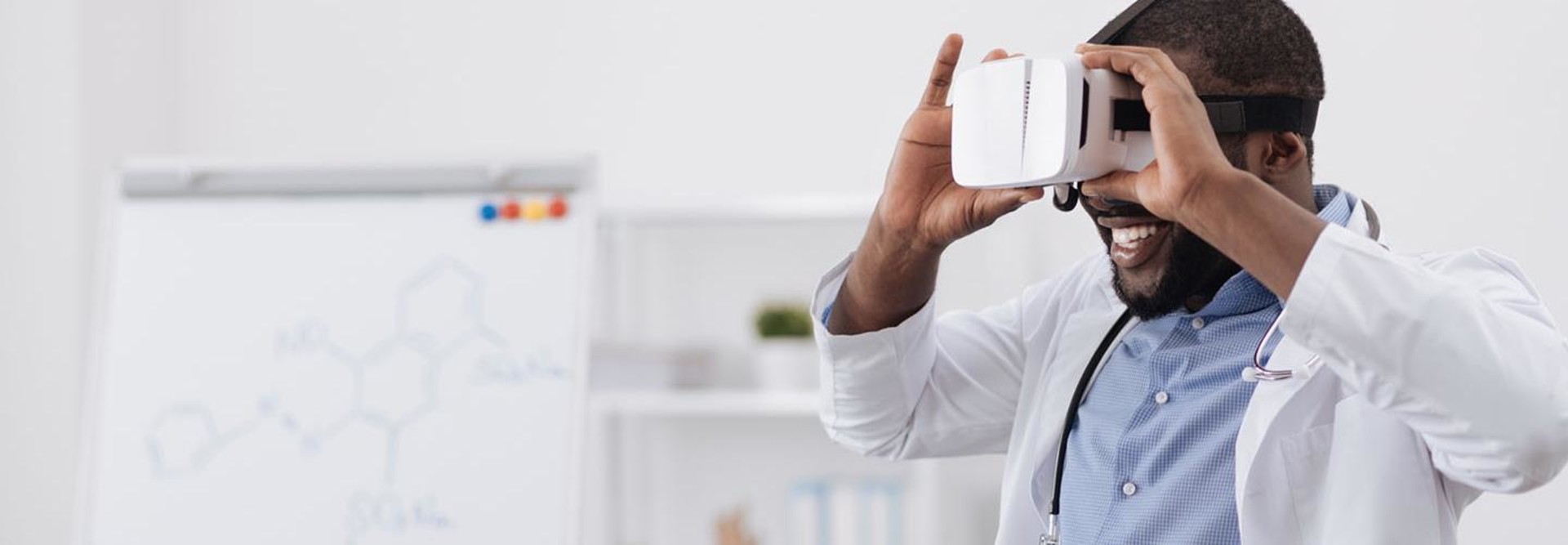Medical Schools Get Virtual with VR and AR Trainings
Virtual and augmented reality are helping to chart a new vision of healthcare for providers.
The technology has been making waves in patient care for everything from pain management to helping addicts combat cravings to help quell the opioid epidemic. With recent forecasts predicting the VR and AR healthcare market will reach $5.1 billion by 2025, its penetration of the industry shows no signs of slowing down.
While the tech has made waves in patient care, it’s also charting a sea change on the other side of the industry, as a training tool for doctors and nurses.
Doctors and Nurses See a Future in VR and AR Training
In 2015, Western University of Health Sciences in Pomona, Calif., opened its J and K Virtual Reality Learning Center, becoming the first school in the country for aspiring medical professionals to access medical curriculum via VR technologies, HealthTech reports. According to Robert Hasel, associate dean of simulation, immersion and digital learning at the school, adding courses that allow students to take tours through the human body via headsets like Oculus Rift, as well as iPad devices that contribute to the study of function and motion, has made a huge difference.
“They want to know how VR changes the educational experience,” he says. “I just tell them to come see for themselves — and that, from my perspective, changes everything.”
Now, other medical schools are beginning to follow suit. Most recently, the University of Nebraska Medical Center has begun construction on its Omaha-based, $118.9 million virtual and augmented reality center that aims to transform healthcare education, much like “aviation simulation changed the flight industry,” UNMC notes in a statement.
The facility is known as the Davis Global Center and was partially funded by the City of Omaha, State of Nebraska and the Department of Health and Human Services. Equipped with VR, AR and holographic technologies, the center will offer learners clinical training exercises and surgical skills training in “realistic simulated” environments.
"Learners do best by having experience, whether it’s learning how to play a sport, a musical instrument or, in my case, do cardiac surgery,” said UNMC Chancellor Jeffrey P. Gold in the statement. "The more experience, the more practice, the more hands-on opportunities we get the better off we are to deliver high quality, safe, effective and patient-centered care. This center will achieve all of those goals and continue to bring Nebraska to the epicenter of the learning world."
The hope for the new technologies is that they will augment traditional teaching techniques by allowing students to more aptly visualize procedures as well as gain hands-on experience alongside more traditional teaching techniques, such as lectures.
"Incorporating experiential learning into the curriculum is important," said UNMC student Cindy Chou, who will graduate in May with both a Doctor of Medicine and doctorate degree. "Studies have shown that with traditional lectures, there is about a 5 percent retention rate of knowledge, whereas if you have hands-on practice or immediate application, it increases the rate up to 90 percent. So, in that sense, we really need to be doing more active learning and more practicing."









